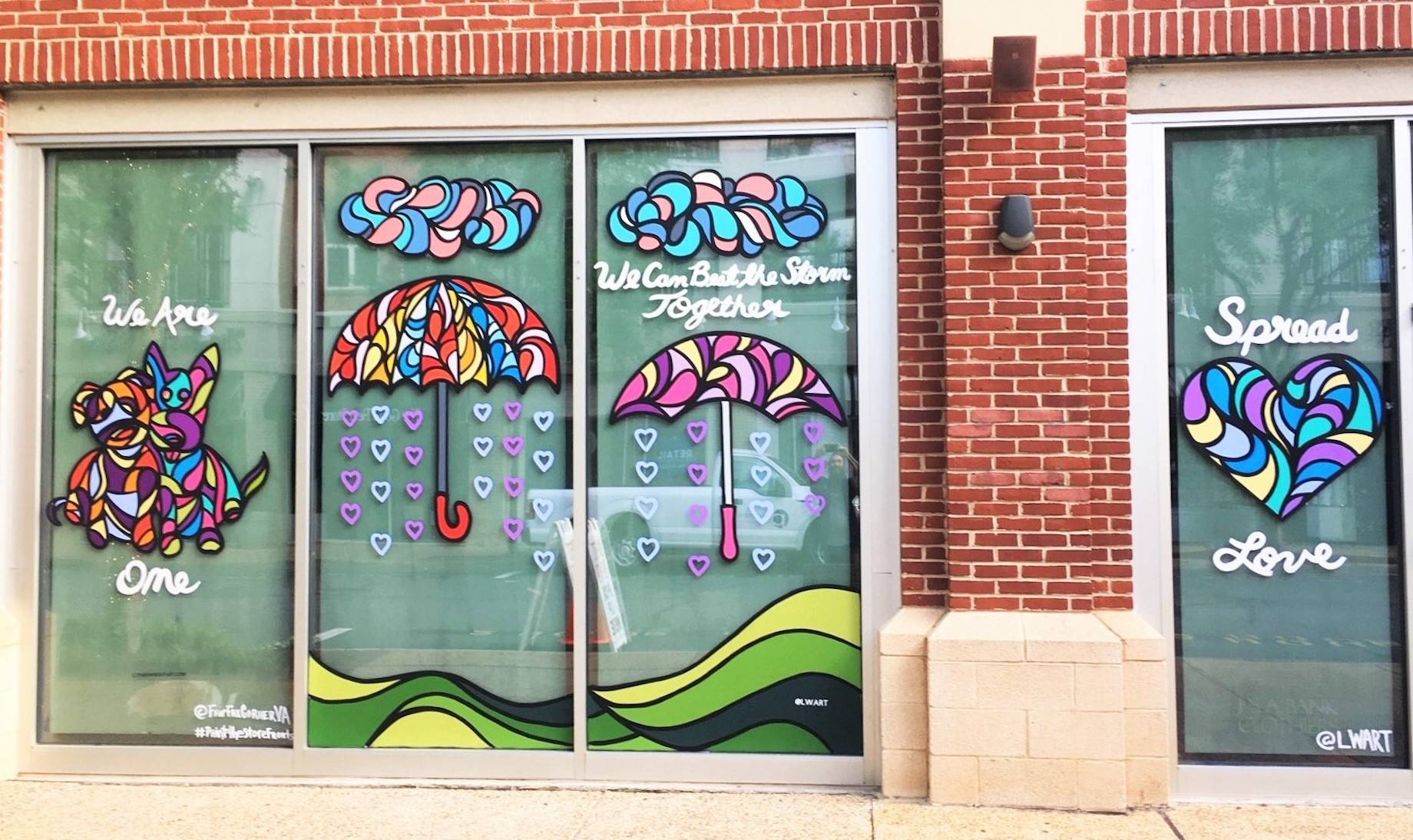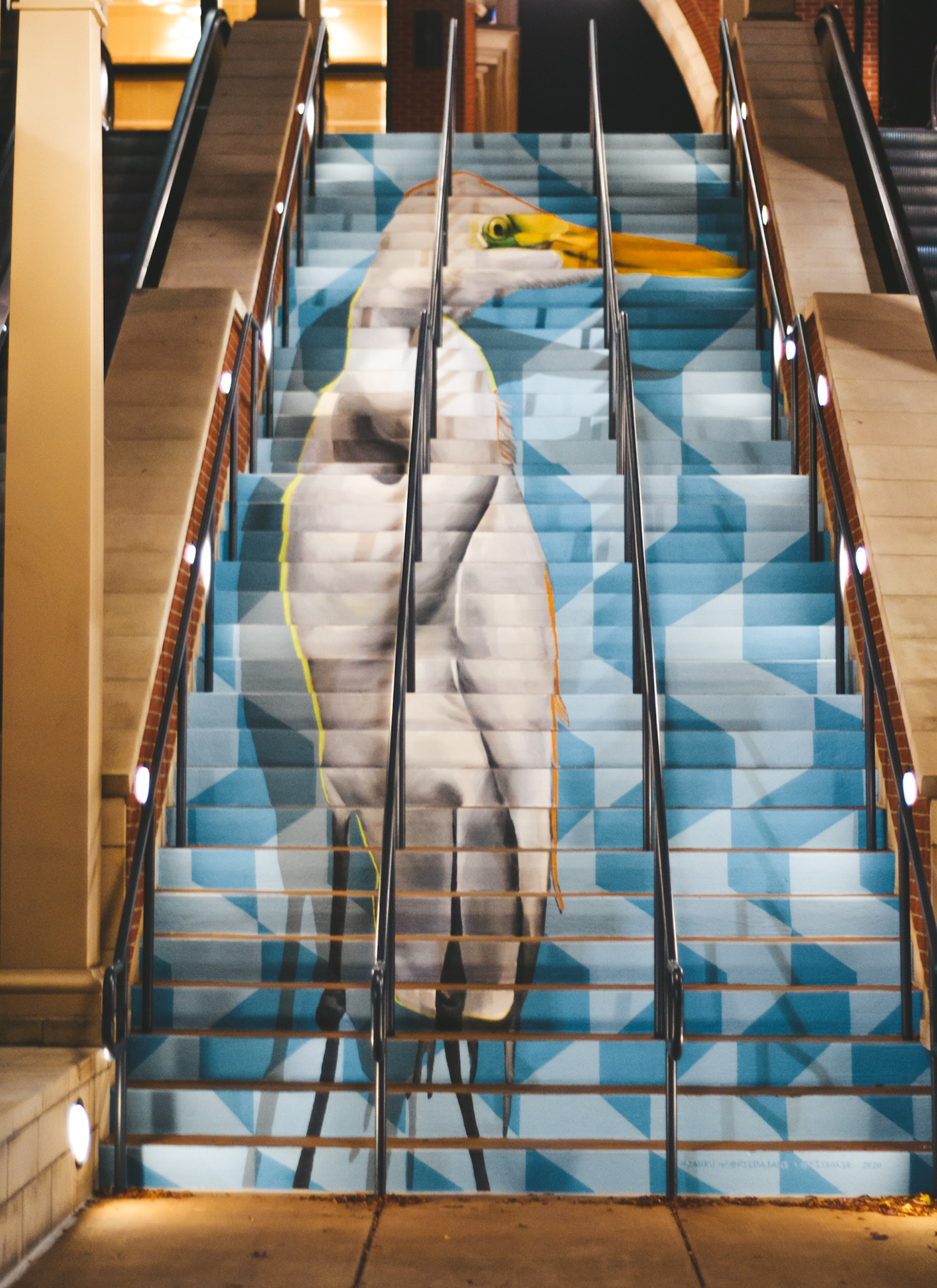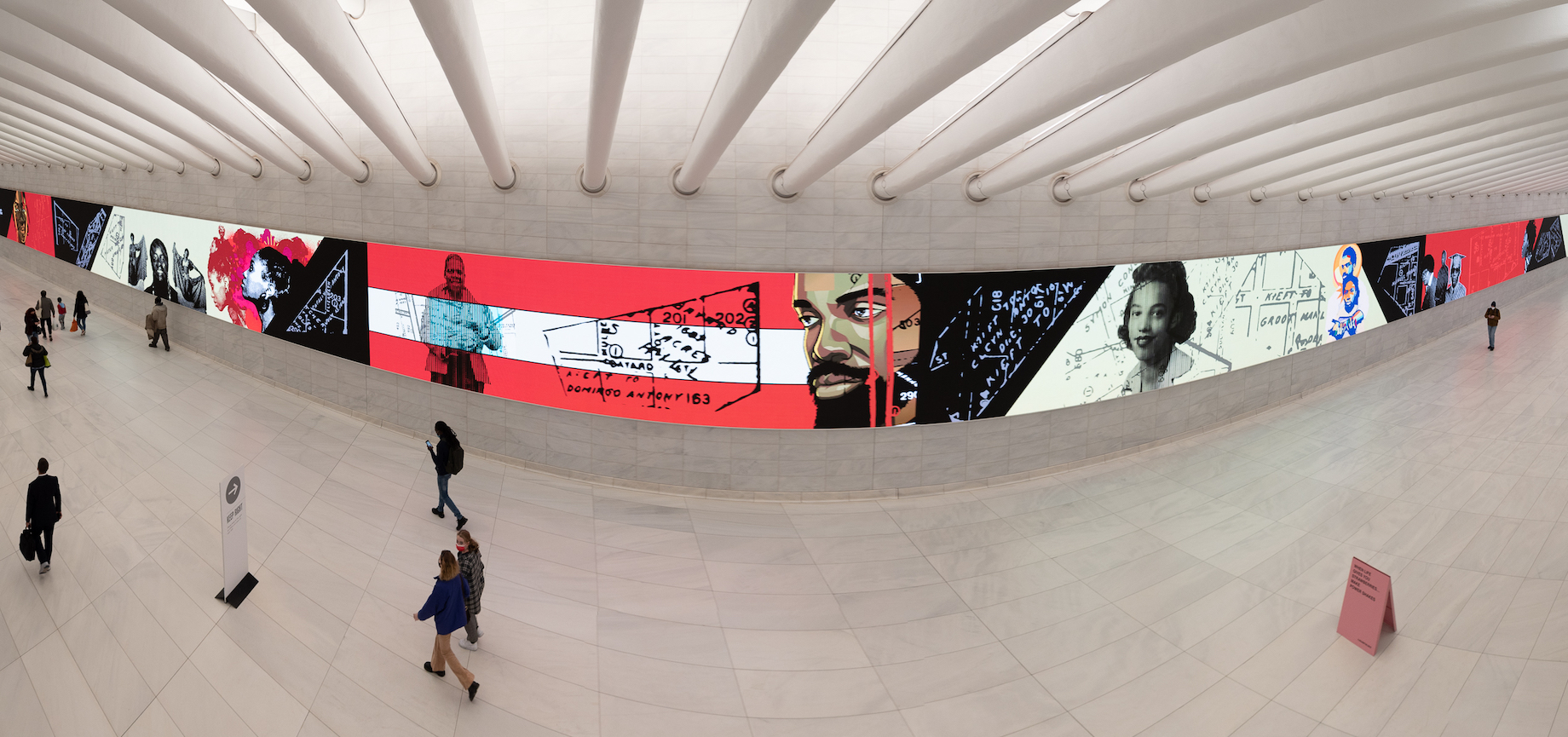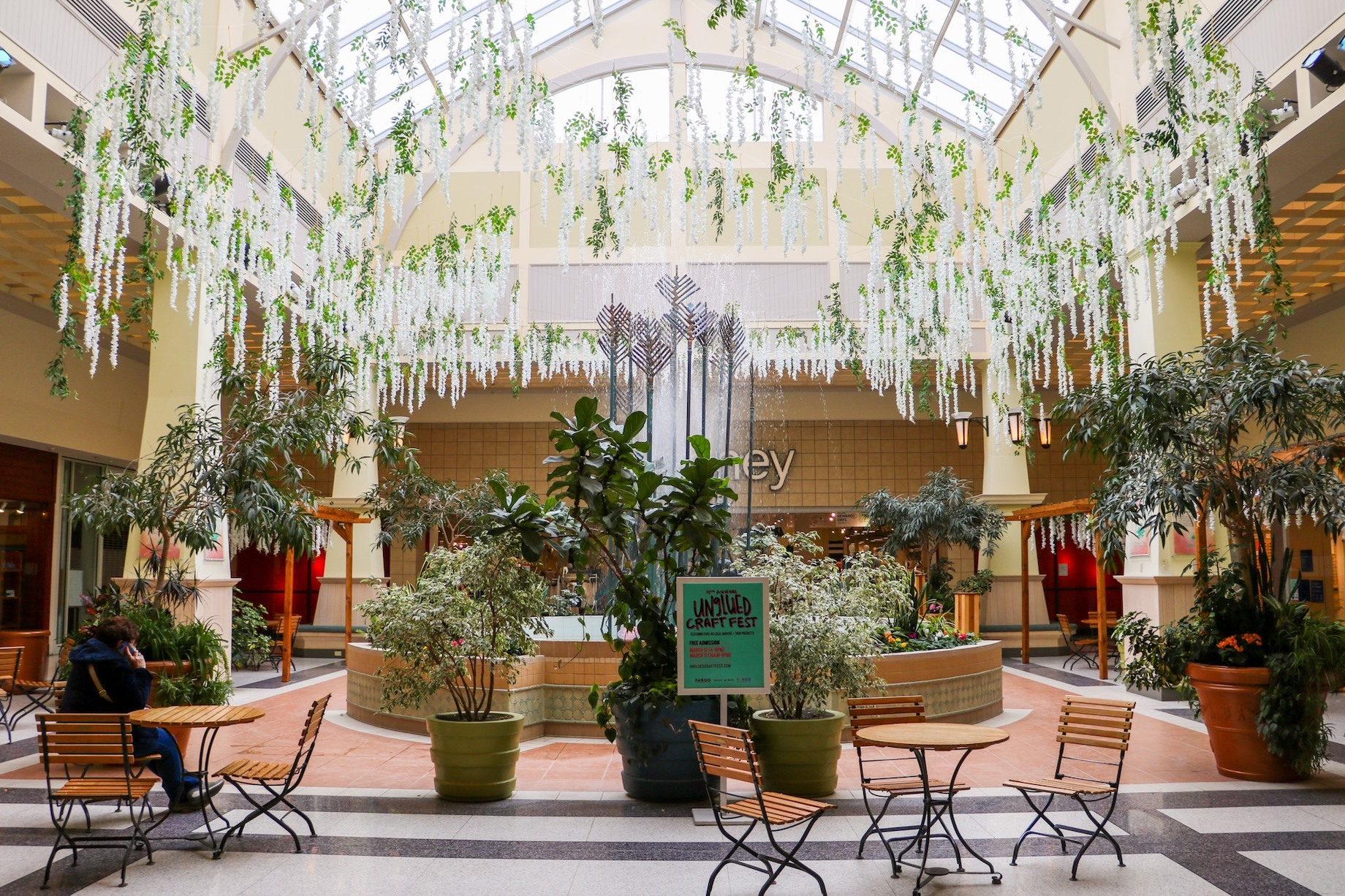As the pandemic has thrown experience-based marketing models into disarray, shopping centers have turned toward art to engage visitors.
For years now, “experience” has been the buzz word of shopping center marketing strategy. To drive traffic and increase shopper engagement and dwell time, shopping centers looked toward activations like large-scale music events, outdoor yoga events and food trucks. COVID-19 threw the world — and this experience-based marketing model — into disarray. Shoppers no longer felt safe at large gatherings and governments outlawed large groups, so “that formula got blown up” recalled Julie Cameron, marketing director of New York City’s Westfield World Trade Center. For marketing executives like Cameron, much of 2020 was spent “figuring out safe ways to get people onsite and engaging with the properties,” she said.
For many centers, at least part of the answer was to invest in art. Whether through murals or signature pieces like giant hand-decorated Easter eggs, art exhibitions allowed shoppers to take in emotion-provoking pieces at their own pace and in their own time, without the threat of large crowds. These splashy new pieces also kept the centers in public conversation, reinforcing their identities as public squares and community centers. “People love art,” said Peterson Cos. vice president and chief marketing officer Angela Sweeney. “Whether you love or hate [a piece], you’re going to have an opinion about it.” And these Instagram-ready installations made for good social media engagement and increased foot traffic.
Over a year after COVID-19 hit the U.S., many centers have determined that these sorts of art installations will continue to be key parts of their engagement strategies, even post-pandemic. In making this calculation, marketing executives are tapping into a cultural ethos. According to ICSC’s Coronavirus Consumer Survey of 1,003 U.S. consumers fielded between March 19 and 21, 15 percent of consumers said things like cultural exhibits and art displays would drive them to visit malls sooner or more frequently and 29 percent want to see things like educational centers, museums, cultural centers and art galleries backfill empty storefronts.
Art as a practical purpose
A record 12,200 stores closed in the U.S. last year, according to CoStar Group. That left about 159 million square feet of vacant retail space. For some centers, art was — and continues to be — a way to bring light to those spaces. Linear Retail commissioned local artists to create paintings, sketches and sculptures to decorate the windows of vacant storefronts at Central Plaza in Wellesley, Massachusetts. Brixmor posted heart images inspired by ICSC’s Back. Together. campaign in some centers’ windows.
These practical fixes sometimes had unexpected results. Soon after the pandemic began, for instance, Peterson reached out to well-known Washington, D.C.-area artist Luther Wright to paint a few of his signature colorful, optimistic messages on some empty storefront windows at its Downtown Silver Spring, Fairfax Corner and Rio properties. Initially, Peterson thought of the art, which featured sayings like “smile” and “we’ll get through this together” as a sort of public service offering. “We wanted to provide a little sunshine, cheer and whimsy” to the community, said assistant vice president of marketing Joanna Rothermel. But soon, “we started realizing that people were really engaging on their own with the art, putting them on social media channels and tagging our properties.”

When the pandemic started, Peterson Cos. commissioned Luther Wright to paint a few of his optimistic messages on vacant windows at some of its properties. Peterson has achieved more than 11,000 social media engagement photos on posts that featured Wright's work at its centers
So Peterson became more intentional in its commissions. For the holiday season, during which Peterson centered on the message of joy, the company asked Wright to write the letters J and O in the properties’ windows, providing the opportunity for shoppers to become the letter Y. The company asked shoppers to post the results on social media for the chance to win a gift card to one of the center’s stores. And when Gaithersburg, Maryland’s popular St. Patrick’s Day event was canceled this year for the second year in a row, Peterson reached out to Wright to paint St. Patrick’s Day images in windows at Rio and invited the community to participate in a photo scavenger hunt of his works. Peterson achieved more than 11,000 social media engagements on posts that featured Wright’s art at their centers, Rothermel says.
Like many others, Peterson will continue these window art exhibits. It already has commissioned Wright for an installment in the summer. The company hopes, Rothermel says, these pieces will “provide a little surprise and delight to customers when they feel comfortable venturing back to shopping centers.”
Art as a way of connecting and healing the community
“Bringing people together, inspiring, soothing and sharing — these are the powers of art,” UNESCO director-general Audrey Azoulay stated on World Art Day in April 2020. For some centers, putting up public art on their properties, which are the heartbeat of many communities, was a way to play a role in healing during the pandemic. At a time that was defined by grayness, anxiety and containment, these pieces brought “color, texture and beauty in our environment,” said Washington Prime Group senior vice president and chief activation officer Jennifer Moretti. She oversees The Canvas Project, which gives local artists spaces to showcase their art at Washington Prime Group centers. “People,” she added, “are thirsting for inspiration.”
Based on the response when SCT asked marketing executives for examples of art installations from 2020, most centers turned to murals, which are relatively low cost to produce. From Kentucky’s Ashland Town Center to Texas’ Outlet Shoppes at El Paso, local artists expressed themes like pride and resilience. These pieces “add enormous cultural value and community pride,” said Annapolis Town Center general manager Anthony Henry of Trademark. While it’s true that shopping centers are in the commodity business, consumers coming to centers are looking for “an emotional connection,” which these works of public art are great at providing, he says.
Last summer, Annapolis Town Center commissioned Annapolis artist Jeff Huntington, also known as Jahru, to paint a giant egret, a bird signifying patience and long life, on a stairwell. The message — and the image — resonated with a community that felt stuck and worried. Since the mural was unveiled in a virtual ceremony last August, more than 100,000 people have viewed it, Henry says, and online photos of the piece have received 15,000 engagements.
For Annapolis Town Center, which is working on the first phase of its redevelopment plan, and for others, murals will play a large role as they look to reengage consumers. These large public pieces, said Moretti, “create a gathering space for the future.”

Annapolis Town Center commissioned artist Jahru to paint Great Egret on a stairway at the center. Since the mural was unveiled in a virtual ceremony, more than 100,000 people have viewed it and online photos of the piece have received 15,000 post engagements
Art as a vehicle for amplifying values and messaging and for creating new bedfellows
Centers also looked to art installations to amplify and communicate messages and values during the pandemic. And because of vacancies, centers had more and different spaces to showcase those messages.
Cameron knew she wanted Westfield World Trade Center to sponsor a Black History Month event honoring the lives of Black people who had lived in the area in the 1600s, then known as New Netherland. She figured the property could advertise the event on the screens in the adjacent Oculus transportation hub. She mentioned the marketing idea to artist and historian Kamau Ware, founder of Black Gotham Experience, a nonprofit that brings to life the impact of the African Diaspora. “My ears went up,” he said. Before COVID, 250,000 people used to pass by the screens a day. “If we had the screens,” he realized, they “could be an experience itself.”
The resulting installation, The Land of the Blacks, was installed in February. The two-minute digital loop documented through graphics, maps and photography the 28 land grants earned by Black people living in New Netherland between 1643 and 1663. The installation increased traffic to the center and attracted new admirers who hadn’t connected Black history and the property. “It was amazing to me how many comments we got like, ‘I didn’t know there were slaves in New York City,” and, ‘It didn’t occur to me that this happened near The Oculus,’” Cameron said.

For The Land of the Blacks (photo credit for pictures above and at top: Dagomatic Photography) Westfield World Trade Center partnered with Black Gotham Experience on a digital exhibit documenting the 28 land grants earned by Black people the area between 1643 and 1663, then known as New Netherland. It was a Black community that predates New York City
The exhibition also made Ware rethink his own engagement strategies. “We work with a lot of museums,” he said. Black Gotham Experience’s installations have been at places like The Shed at Hudson Yards farther north in Manhattan, Yale University and SXSW. But until this partnership, “we’ve never done something in a shopping center,” he said. Now he’s rethinking what makes a good exhibit hall. “It took our conversation into new places,” he said. “What we would like to do now is find the right type of partners in the private sector to develop experiences that educate and inspire.” Retail centers, he says, now are on his list.
Art as a way to increase dwell time
when shoppers wanted to get in and out as quickly as possible. A 2007 study conducted by MIT and Path Intelligence had showed that a 1 percent increase in dwell time resulted in a 1.3 percent increase in sales at the center studied.
From The Outlet Shoppes at Atlanta to West Acres Regional Shopping Center in Fargo, North Dakota, centers began investing more in plantscaping, decor and seasonal decorations to amplify the ambience and give community members reasons to stop and take in the views. “This was something we were doing prior to COVID but not in as grand of a way as we are today,” explained West Acres Development COO Alissa Adams. To provide vivid scenery, perfect for Instagram and family photos, West Acres draped wisteria and vines at its fountain and on handmade pergolas and turned one of its “courts” in the common area into a desert-like environment complete with cactus and florals. One customer who had skipped their normal Arizona trip last year told Adams the space made them feel a little like they were there. “It has definitely been a silver lining of the last year, and we plan to continue these amplified efforts going forward,” Adams said.

To welcome spring, West Acres Regional Shopping Center hung hundreds of hanging wisteria and vines at its fountain
Traditionally, in fact, such decorations have brought people to town centers. And Chris Roy — director of creative design for OTL, a design construction company that creates water features, rockworks and themed environments — says investing in ambience-enhancing pieces like fountains and waterfalls can increase foot traffic to retail centers and encourage restaurateurs to expand their outdoor footprints.
One of Roy’s California clients, for instance, told Roy it garners rents at $10 to $15 more per square foot than nearby comps because retailers want to be in the center with a water feature. And when one Midwestern client shared site plans for an OTL outdoor show fountain recently, a few tenants asked to increase their patio space so patrons could be closer to the fountain. “This translated into additional revenue to the owners before it was even built,” Roy said.
Of the 1 million people events company Freeman surveyed in March, 78 percent would be confident returning to events in the fall. But the allure of beautiful spaces won’t disappear. According to Sweeney, “It goes back to creating vibrant places that people want to gather.”
By Rebecca Meiser
Contributor, Commerce + Communities Today